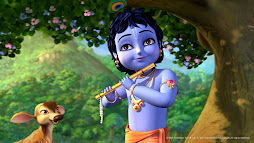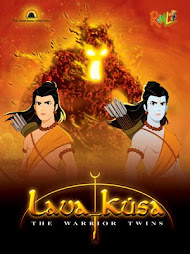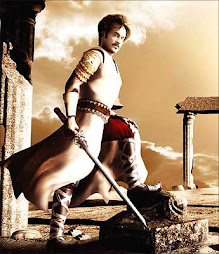1. Timing
2. Ease In and Out (or Slow In and Out)
3. Arcs
4. Anticipation
5. Exaggeration
6. Squash and Stretch
7. Secondary Action
8. Follow Through and Overlapping Action
9. Straight Ahead Action and Pose-To-Pose Action
10. Staging
11. Appeal
12.Personality
By following and knowing when, where and how to apply these basic ideas, and by understanding them, one should be able to create good animation. It is important to note that simply memorizing these principles isn't the point. No one will care whether or not you know this list. It's whether or not you truly understand and can utilize these ideas that matter. If you do, it will show automatically in your work.
1.TIMING:It may seem kind of silly to even have something as basic as timing on the list. Obviously timing is the essence of animation. The speed at which something moves gives a sense of what the object is and why it is moving. Something like an eye blink can be fast or slow. If it's fast, a character will seem alert and awake. If it's slow the character may seem tired and lethargic. John Lasseter gave a good example in his famous Siggraph paper using a character with a head that turns left and right. Essentially, he gives different durations for the exact same head turn motions, and shows how it can be 'read' differently based merely on the timing. If the head turns back and forth really slow, it may seem as if the character is stretching his neck. A bit faster it can be seen as saying "no". Really fast, and the character is reacting to getting hit by a baseball bat. Having a good sense of timing is critical for good animation. Cartoony motion is usually characterized as fast snappy timing from one pose to another. Realistic tends to have more to do about going between the poses. But both require careful attention to the timing of every action. I think it was Chuck Jones who said "The difference between the right timing and the almost right timing, is the difference between lightning and a lightning bug." Samples: 60 Frame Head turn - This looks more like a stretch action 30 Frame Head turn - This is more like a "no no no" action 5 Frame Head turn - This is more as if he just got hit Note how all of these samples have the same key poses, but simply changing the timing causes the action to be read very differently.
TIMING VIDEO:
2. EASE IN AND OUT (or Slow In and Out): Ease in and out has to do with gradually causing an object to accelerate, or come to rest, from a pose. An object or limb may slow down at it approaches a pose (Ease In) or gradually start to move from rest (Ease Out). For example, a bouncing ball tends to have a lot of ease in and out when at the top of its bounce. As it goes up, gravity affects it and slows down (Ease In), then it starts its downward motion more and more rapidly (Ease Out), until it hits the ground. It's important to note that "gradually" here doesn't have to mean slow. It just means the object isn't moving 100% and then in one frame coming to a complete stop. For snappy cartoon motion, you may have ease in and out over only a couple of frames. But even 3 frames of ease in and out may help a limb from looking too stiff or mechanical. As applied to character animation, you usually use ease in and out for most movemnts. Even if the character is just turning their head, you will probably want a few frames to soften up the start or end of the motion. Samples: Bouncing Ball - The ball on the left is linear, which looks abrupt. The one of the right eases in/out at the top and looks smoother and more natural. Arm - Bad, No Ease - Very robotic/computery looking Arm - Good, With Ease - Much more natural and fluid.
SLOW IN n SLOW OUT VIDEO:
3. ARCS: In the real world almost all action moves in an arc. When creating animation one should try to have motion follow curved paths rather than linear ones. It is very seldom that a character or part of a character moves in a straight line. Even gross body movements when you walk somewhere tend not be perfectly straight. When a hand/arm reaches out to reach something, it tends to move in an arc. Sticking with the head example, the head rotates in an arc like fashion. That is if a characters head rotates from left to right, at the halfway point, it should actually be dipped or raised slighly depends on where it is looking. This stops the rotation from being perfect linear or mechanical looking. Samples: Bad, Linear Ball - Linear motion looks rigid and stiff Good, Arc Ball - Smoothly arcing the same motion looks more natural Head Turn, Linear - Stiff and mechanical Head Turn, Arc - A bit more natural and interesting looking.
ARC VIDEO:
4. ANTICIPATION: Action in animation usually occurs in three sections. The setup for the motion, the actual action and then follow-through of the action. The first part is known as anticipation. In some cases anticipation is needed physically. For example, before you can throw a ball you must first swing your arm backwards. The backwards motion is the anticipation, the throw itself is the motion. Anticipation is used to lead the viewers eye to prepare them for the action that follows. Generally, a longer period of anticipation is needed for faster actions. If you think about cartoons, you've probably seen cases where a character zips off screen leaving a puff of smoke. Usually just before the zip, there is a pose where the characters raises a leg and bends both arms as if he's about to run. That's the anticipation pose for the off screen run. Generally, for good clear animation, the viewer should know what is about happen (anticipation), what is happening (the actual action itself) and what happened (related to follow through). Most body movements of a character require anticipation in some form, especially from rest. For example, before a character takes a step to walk, they must shift their weight on one leg so they can lift the other, another example of anticipation. Samples: Moving Ball - The ball on top simple moves from left to right, but the bottom ball anticipates the motion before moving, broadcasting what is about to happen. Bug Jump, Bad - The bug jumps without any anticipation and looks totally wrong. Bug Jump with Aniticipation - Here the bug character jumps up after first crouching (anticipating) the main action.
ANTICIPATION with OTHER PRICIPLES:
5. EXAGGIRATION: Exaggeration is used to accent an action. It should be used in a careful and balanced manner, not arbitrarily. Figure out what the desired goal of an action or sequence is and what sections need to be exaggerated. The result will be that the animation will seem more realistic and entertaining. One can exaggerate motions, for example an arm may move just a bit too far briefly in an extreme swing. A pose can be exaggerated, perhaps the characters leans just a bit farther than normal. Generally when animating to dialogue, one listens to the track and picks out areas that sound like they have more stress or importance, and then tends to exaggerate poses and motions that fall at those times. The key is to take something and make it more extreme in order to give it more life, but not so much that it destroys believability. Samples: Bug Point, Bad - Pretty subtle not exaggerated motion. Bug Point, Good Exaggerated - Much more exaggerated motion. He is obviously mad here. *note that in many cases, subtlety is good. Subtle action mixed with exaggeration here and there can make for some of the best acting and animation. The first sample above is almost scarier because it's so subtle...he seems mad, but somewhat controlled...you're not sure if he is going to explode. However, it could probably use a bit more motion on the spine. The second sample is more exaggerated and might fit within the context of a larger animation, especially if it was more cartoony.
EXAGGIRATION VIDEO:
6. SQUASH AND STRECH: Squash and stretch is a way of deforming an object such that it shows how rigid the object is. For example if a rubber ball bounces and hits the ground it will tend to flatten when it hits. This is the squash principle. As it starts to bounce up it will stretch in the direction it is going. Squash and Stretch was also initially done to prevent strobing due to lack of motion blur. However even in cases where motion blur can be used, there may still be reasons to use it. An important note about squash and stretch, is that no matter how an object deforms, it should still appear to retain it's volume. That is, if a ball flattens down 2 times as much as normal, it will have to get 2 times as wide to keep its volume. If a character or part of a character doesn't maintain volume with squash and stretch, believeability will be lost. The most obvious usage in character animation is muscles. When a muscle is contracted it will squash and when extended, it stretches. Not every part of a realistic character should have this principle applied. For example, the skeleton or things like eyeballs etc may not really deform much, though the flesh around them may. Most people try NOT to simply use scaling for squash and stretch. Real squash and stretch is usually some part of an object deforming differently that just a simple scale up or down. This presents a challenge to get CG squash and stretch looking as nice as drawn poses, since it's usually a bit tougher to easily animate random shape deformation. Rigid objects can still squash and stretch in a way. Think of the lamps in Luxo Jr. The lamp itself is a rigid metal object. But before it jumps it anticipates the action by crouching down and bending. That bending is basically squash and stretch. Samples: Ball Bounce and Squash - The ball on the left is animated without squash and stretch, while the one on the right deforms. Note too how the one of the right does not use a simple scale for the effect. The result gives a more elastic and loose feel to the ball on the right. Bug Squash Tummy - Here the bug pats his stomach and it squashes and stretches.
SQUASH AND STRECH VIDEO:
7. SECONDERY ACTION: Secondary Action is an action that occurs because of another action. For example if a dog is running and suddenly comes to a stop, its ears will probably still keep moving for a bit. Another example, if an alien is walking and it has an antenna on it, the antenna will probably sway as a result of the main body motion. This is secondary action. It is caused because of the main motion. Secondary action creates interest and realism in animation. It should be staged such that it can be noticed but still not overpower the main action. Samples: Bug Antenna Swing - Here the bug does a take and notices the camera. The antenna motion is secondary action, it is caused by the head and body motion. It is not the main action, but enhances the overall scene.
SECONDERY ACTION VIDEO:
8. FOLLOW THROUGH aNd OVERLAPING ACTION:Follow through is the movement at the end of a motion. In most cases objects don't stop suddenly, but tend to travel a little farther past their end point. For example when throwing a ball, after releasing the ball your arm will continue to move a bit. This is known as follow through. Even if a character is walking and stops, the center mass of the character usually has a tendency to overshoot a little bit and then come back to rest. This is another example of follow through. Related to follow through and secondary action is overlapping action. Usually if a character takes a pose or moves or stops moving, you don't want every section of the character to start and stop at exactly the same time. If it does, it will seem very rigid or mechanical. This slight breakup of timing is overlapping action. For example, if a character is standing and then shift his weight, puts his hand on his hip and the other hand points at the camera, you might break this up so each part occurs at a slightly offset time. Almost every action can be overlapped. Another sample would be if a character jumps up and lands on the ground. Instead of having both feet hit at the same time and the arms swing back (a good example of follow through) to counteract the landing also on the same frame, each foot could hit a few frames apart and the arms could continue to move even longer afterwards. Generally speaking a lot of secondary action also falls under the category of overlapping action. That is, most parts of a character that are affected by the main motion (secondary) of some other body part are also overlapped. Another example of this is a pony tail. If a character moves their head, the pony tail is moving because of secondary action. Once the head stops (the main action) the pony tail will still continue to move a bit longer before it comes to rest (it is overlapped). Samples: Ball Follow Through - The ball on the top simply moves and stops, while the bottom ball continues past the end point and then comes back to rest (follows through). Bug Arm Follow/Overlap - Here the bug arm rotates up with follow through and overlap. The arm itself and the hand continues moving past the stop position, then falls back into place. In addition, this shows secondary action since the arms comes to rest before the hand. That is the hand takes a little longer than the rest of the parts to stop. This effectively breaks up, or overlaps the action so it doesn't all stop at the same time. Because delaying parts of a hierarchy or chain (like an arm, leg, antenna, etc...) is such a common form of overlapping action, it is often given it's own term, "Successive Breaking of Joints". This means that each part of the limb moves and stops one after another, by being offset in time slightly. This gives the action a more natural and whiplike feel as shown here.
FOLLOW THROUGH VIDEO:
9. STRAIGHT AHEAD ACTION and POSE-To-POSE ACTION: There are 2 basic methods to creating animation. Straight ahead animation is one where the animator draws or sets up objects one frame at a time in order. For example, the animator draws the first frame of the animation, then draws the second, and so on until the sequence is complete. In this way, there is one drawing or image per frame that the animator has setup. This approach tends to yield a more creative and fresh look but can be difficult to time correctly and tweak. The other approach is Pose-To-Pose animation. Pose to Pose is created by drawing or setting up key poses and then drawing or creating inbetween images. This is the basic computer "keyframe" approach to animation. It is excellent for tweaking timing and planning out the animation ahead of time. You figure out the key poses, and then the motion inbetween is generated from that. This is very useful when specific timing or action must occur at specific points. You always know exactly what will happen. The basic difference is with Pose-To-Pose you plan out, and know exactly what will happen ahead of time, whereas with Straight Ahead, you're not quite sure how things will turn out until you are done. With computers, some people tend to create a hybrid of the two, planning out the overall poses, and then straight ahead animating the stuff inbetween. (See #17, Blocking/Refining below) Samples: Thumbnail Sketches - This is the rough planning (for pose to pose) thumbnail sketches I did before animating the "Ladies Man" bug animation that can be found on my Anims Page.
POSE-To-POSE ACTION VIDEO:
10. STAGING: Staging is presenting an action or item so that it is easily understood. In general, action is presented one item at a time. If too much is going on the audience will be unsure what to look at and the action will be "upstaged". One important facet of staging is staging in "silhouette". This means that a pose of an object or character can be interpreted even in a black and white silhouette. If you can not "read" the pose of a character in silhouette it is not a strong pose and should probably be changed. With characters, it is important to really think about whether or not each pose for an action adequately and correctly reads to the audience. You should also make sure no two parts of a character contradict each other (unless it's intended). For example if you're staging a sad pose you may have the character hunched over with his arms hanging at his sides and a high camera angle...but if you give him this big grin on his face it won't fit with the rest of the pose. Staging multiple characters is also an important issue. Generally you want to always make sure you know where the audience is looking within the shot. Background characters must be animated such that they are still "alive", but not so much that they steal the viewers attention from the main action. Staging like this is also related to a lot of directing and editing principles. I'd highly recommend reading "Film Directing: Shot by Shot" by Steven Katz for a good book on this type of stuff. Samples: Bad Silhouette - Here the character can't really be read in silhouette (though the dark arm on light body color might be acceptable). Good Silhouette - This is staged much more clearly in silhouette. You can tell what is going on much easier.
STAGING IMAGES(BAD AND GOOD)


11. APPEAL: Appeal means anything that a person likes to see. This can be quality of charm, design, simplicity, communication or magnetism. Appeal can be gained by correctly utilizing other principles such as exaggeration in design, avoiding symmetry, using overlapping action, and others. One should strive to avoid weak or awkard design, shapes and motion. It's important to note that appeal doesn't neccesarily mean good vs. evil. For example, in Disney's animated classic "Peter Pan", Captain Hook is an evil character, but most people would agree that his character and design has appeal. The same goes for Hopper in "A Bug's Life". Even though he's mean and nasty, his design and characterization/personality still has a lot of appeal.
OVERLAPING ACTION VIDEO:
12. PERSONALITY: This word isn't actually a true principle of animation, but refers to the correct application of the other principles. Personality determines the success of an animation. The idea is that the animated creature really becomes alive and enters the true character of the role. One character would not perform an action the same way in two different emotional states. No two characters would act the same. It is also important to make the personality of a character distinct, but at the same time be familiar to the audience. Personality has a lot to do with what is going on in the mind of the character, as well as the traits and mannerisms of the character. It is helpful to have some background in acting, and certainly taking an acting or improv class as an animator is a good idea.
STRAIGHT AHEAD ACTION VIDEO:




























